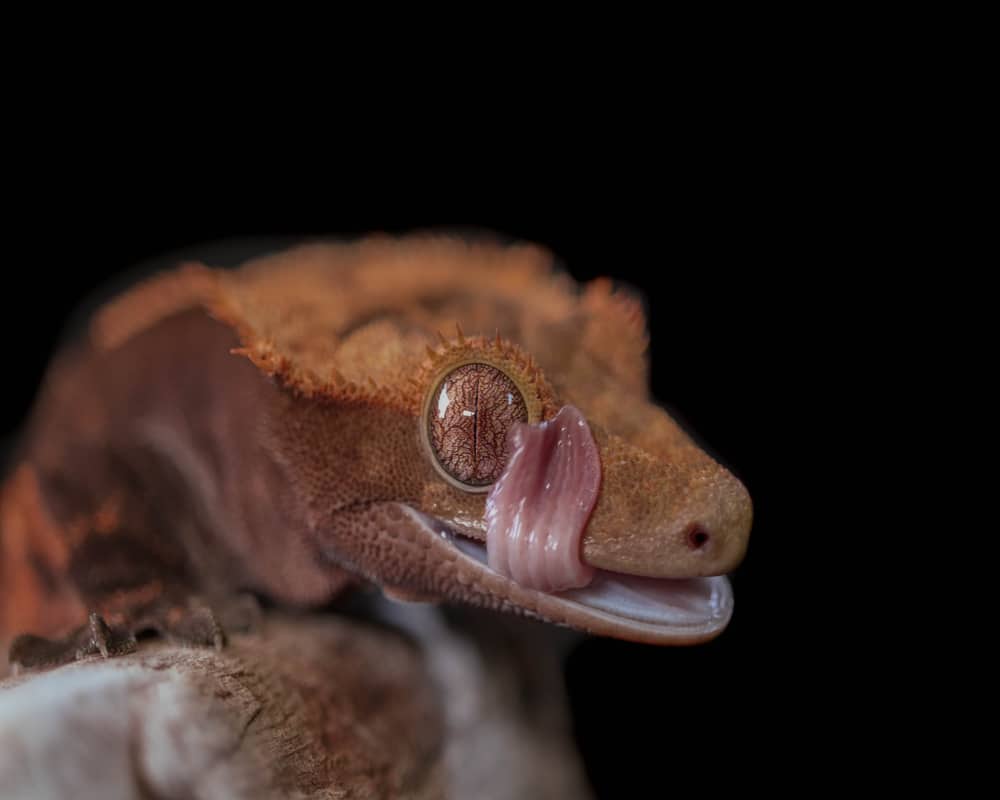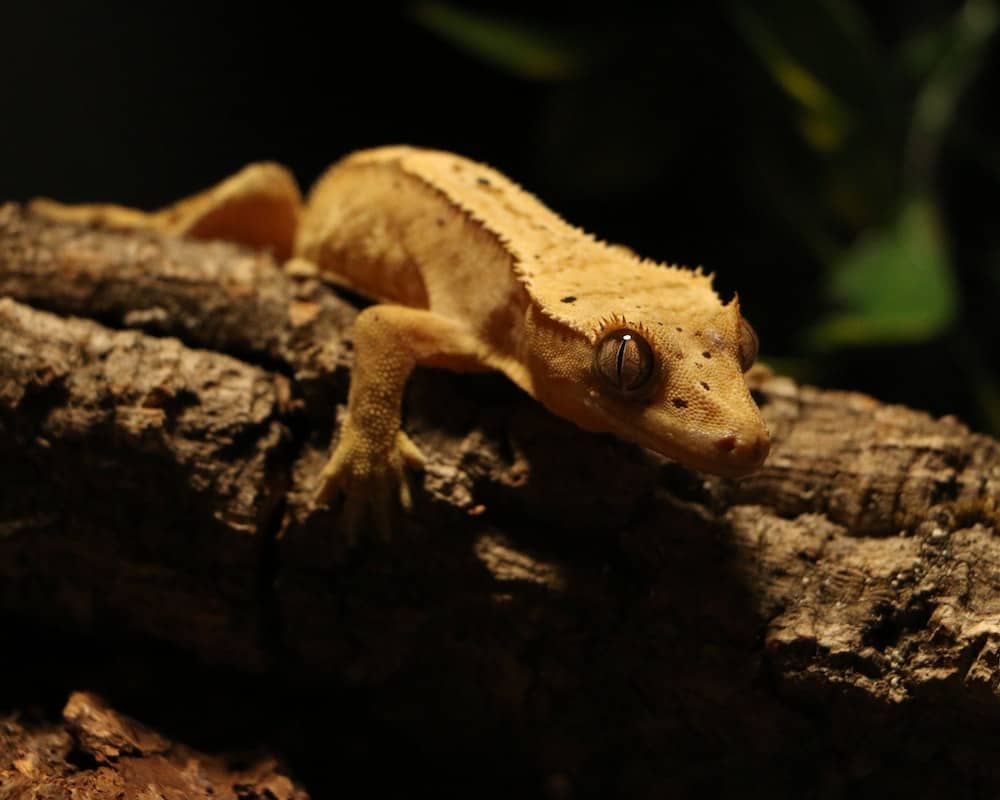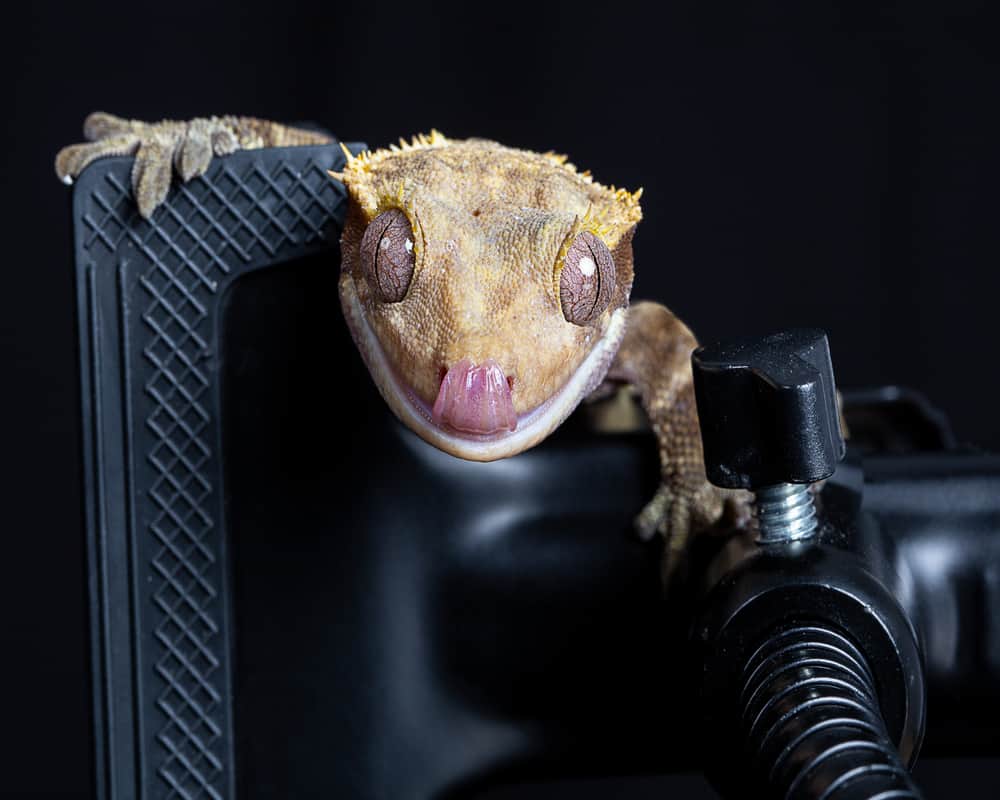Crested geckos are captivating and charming reptile pets that have gained popularity among enthusiasts due to their docile nature, and relatively low maintenance requirements. While their primary diet mainly comprises insects and commercial gecko food, incorporating fruits into their diet can provide essential nutrients and offer variety to their meals.
Crested geckos can eat various fruits, including bananas, papaya, mango, figs, and apples. It is crucial to exercise caution when selecting fruits for these little creatures, as their dietary needs are specific and must be balanced to ensure their overall health and well-being.
In this comprehensive guide, we will explore the good fruits for crested geckos and avoid some with potentially harmful components.
- Understanding The Nutritional Needs Of Crested Geckos
- Safe Fruits for Crested Gecko with A High Calcium To Phosphorus Ratio
- Fruits with A Moderate Calcium To Phosphorus Ratio
- Fruits with A Low Calcium To Phosphorus Ratio
- Fruits To Avoid Feeding the Crested Geckos
- Ideal Crested Gecko Feeding Schedule
- Do Crested Geckos Need Water?
- Conclusion
Understanding The Nutritional Needs Of Crested Geckos
Before delving into the specific fruits suitable for these reptiles it is essential to understand their nutritional requirements. These reptiles are primarily insectivores, meaning their diet primarily consists of insects.
- In captivity, they also benefit from commercial gecko food, such as specialized powder diets. However, to mimic their natural diet in the wild, which may include some fruits and nectar, it is possible to introduce certain fruits into their diet occasionally.
- One critical aspect of their nutrition is the calcium to phosphorus (Ca:P) ratio. Calcium is vital for bone health, muscle function, and other physiological processes.
- Inadequate calcium intake can lead to metabolic bone disease, a severe condition that can be fatal for geckos.
- The ideal Ca:P ratio for crested geckos should be around 2:1, favoring calcium over phosphorus. Fruits that provide this balanced ratio are particularly beneficial for their well-being.
Safe Fruits for Crested Gecko with A High Calcium To Phosphorus Ratio
- Papaya: Rich in vitamins and minerals, papaya offers a favorable calcium-to-phosphorus ratio, making it a safe and nutritious choice for these reptiles. It also contains essential enzymes that aid digestion.
- Fig: Figs provide a balanced Ca:P ratio and are a delicious treat for your gecko. They are a good source of dietary fiber and essential minerals.
- Prickly Pear: This unique fruit contains a good amount of calcium and can be offered occasionally as part of a varied diet.
- Raspberries: Apart from being tasty, raspberries offer a suitable Ca:P ratio to incorporate into your gecko’s diet, along with beneficial antioxidants.
- Orange: While oranges have a relatively higher Ca:P ratio, they should be fed in moderation due to their vitamin C content, which can be harmful in excess.
Fruits with A Moderate Calcium To Phosphorus Ratio
- Berries (blueberries, blackberries, strawberries): These small, colorful fruits are rich in antioxidants and nutrients, making them a great addition to your gecko’s diet. They also provide a suitable Ca:P ratio for regular consumption.
- Grapes: With a balanced Ca:P ratio, grapes can be offered as an occasional treat for your gecko. Ensure they are cut into small, manageable pieces to prevent choking.
- Apples and Pears: These provide dietary fiber and are safe for crested geckos in moderation. Remove seeds and core before offering.
- Melons (watermelons, cantaloupes): Melons are hydrating and offer a favorable Ca:P ratio for your pet. Like grapes, they should be cut into appropriate portions.
- Cherries: Cherries can be offered in small quantities as a delicious and occasional treat. Remove pits before feeding.
Fruits with A Low Calcium To Phosphorus Ratio
- Bananas: High in sugar and phosphorus, bananas should be fed in moderation as an occasional treat. They are not the best source of calcium for crested geckos.
- Peaches and Plums: These should only be offered occasionally due to their low Ca:P ratio. Feed in small amounts to avoid imbalances in the diet.
- Pumpkins and Pomegranates: While these are safe for these small reptiles, they should be given sparingly due to their low Ca:P ratio. Offer as an occasional treat.
- Passion Fruits: Limited quantities of passion fruits can be offered as a treat. Their low Ca:P ratio makes them less suitable for regular consumption.
Fruits To Avoid Feeding the Crested Geckos
- Citrus Fruits: Citrus fruits such as lemons, oranges, kiwis, pineapples, and grapefruits should be avoided due to their high vitamin C content and oxalic acid concentration. These components may cause digestive issues and hinder calcium absorption in crested geckos.
- High Oxalic Acid Fruits: Star fruit and rhubarb should be completely avoided due to their high oxalic acid content and low Ca:P ratio. Oxalic acid can bind with calcium reducing its availability to the gecko’s body.
Ideal Crested Gecko Feeding Schedule
Creating a proper feeding schedule for your pet is essential to ensure it receives a balanced diet and maintains good health.
Crested geckos are nocturnal creatures, so it’s best to feed them during the evening or early night when they are most active. Here’s a general feeding schedule that you can follow:
Daily:
- Fresh Water: Provide a shallow dish of clean, fresh water every day. Make sure to change it regularly to prevent contamination.
- Commercial Gecko Diet: Offer a high-quality commercial crested gecko diet (CGD) every night. This prepared food should be a staple of their diet as it provides essential nutrients. It’s readily available and convenient to use, making it an excellent choice for their primary food source.
Every Other Day:
Insects: Crested geckos enjoy occasional live insects as part of their diet. Every other day, you can offer small, gut-loaded insects such as crickets or small roaches. Dust the insects with a calcium supplement before feeding them to your gecko.
Gut-loading involves feeding the insects nutritious foods before offering them to your gecko, ensuring that the insects pass on these nutrients to your pet.
Twice A Week:
Fruit: Twice a week, you can offer small amounts of safe fruits to your pet. Choose fruits with a suitable calcium-to-phosphorus ratio, as mentioned in the previous guide.
Remember that fruit should be offered as treats and not form the majority of their diet.
Rare Treats:
Treats like wax worms or mealworms can be offered as rare treats. These should be given sparingly, as they are high in fat and can lead to weight gain if overfed.
Additional Tips:
- Offer food in the evening or early night when your gecko is most active. Remove any uneaten food in the morning to maintain cleanliness in their enclosure.
- Always provide fresh water in a shallow dish, and make sure it’s accessible to your gecko at all times.
- Monitor your gecko’s weight and overall health. If you notice any significant changes, consult with a veterinarian experienced in treating reptiles.
- Avoid feeding your pet insects that are too large, as they may have difficulty swallowing or digesting them.
- Variety is essential. While commercial gecko diets should form the basis of their diet, offering a variety of insects and fruits helps provide essential nutrients and mental stimulation.
Do Crested Geckos Need Water?
Yes, these reptiles absolutely need water. Like all living creatures, water is essential for survival and overall health. While crested geckos primarily get their hydration from the food they eat, it’s essential to provide a separate water source to ensure they have access to clean, fresh water at all times.
In the wild, crested geckos might drink water droplets found on leaves and in crevices during rainfall or morning dew. In captivity, it is crucial to replicate this by offering a shallow dish of clean water in their enclosure. The water dish should be easily accessible to the geckos, especially during their active hours in the evening and night.
Here are some important points to consider regarding water:
Hydration
Providing water ensures that your pet stays properly hydrated. Proper hydration is essential for their overall health and helps with digestion, shedding, and other physiological processes.
Dietary Source
While crested geckos obtain some water from the food they eat, relying solely on this method may not be sufficient, especially during hot or dry conditions. Having a water dish available ensures they can drink when needed.
Misting
In addition to the water dish, misting the enclosure once a day or every other day can help create a humid environment and provide additional water droplets for the gecko to drink. Misting also helps maintain proper humidity levels, which is crucial for their well-being.
Cleanliness
Regularly clean and change the water in the dish to prevent bacterial growth and contamination. Using a shallow dish makes it easier for the gecko to access the water and reduces the risk of accidental drowning.
Environmental Enrichment
Besides being a water source, a shallow water dish can also serve as a source of enrichment for your pet. Some geckos may even use the water dish to bathe or soak in.
Ensure that the water dish is placed in an area of the enclosure where it won’t be easily soiled by feces or substrate. Always use dechlorinated water to avoid any harmful effects of chlorine or other chemicals.
Conclusion
Adding fruits to a crested gecko’s diet can be a delightful way to provide variety and essential nutrients. However, it is essential to prioritize fruits with a high or moderate calcium-to-phosphorus ratio to support their overall health.
Remember to offer fruits as treats and not as the primary diet, which should consist of insects and commercial gecko food. By being mindful of the fruits you offer and maintaining a balanced diet, you can ensure that your pet enjoys a long, happy, and healthy life as your fascinating and adorable reptile companion.




